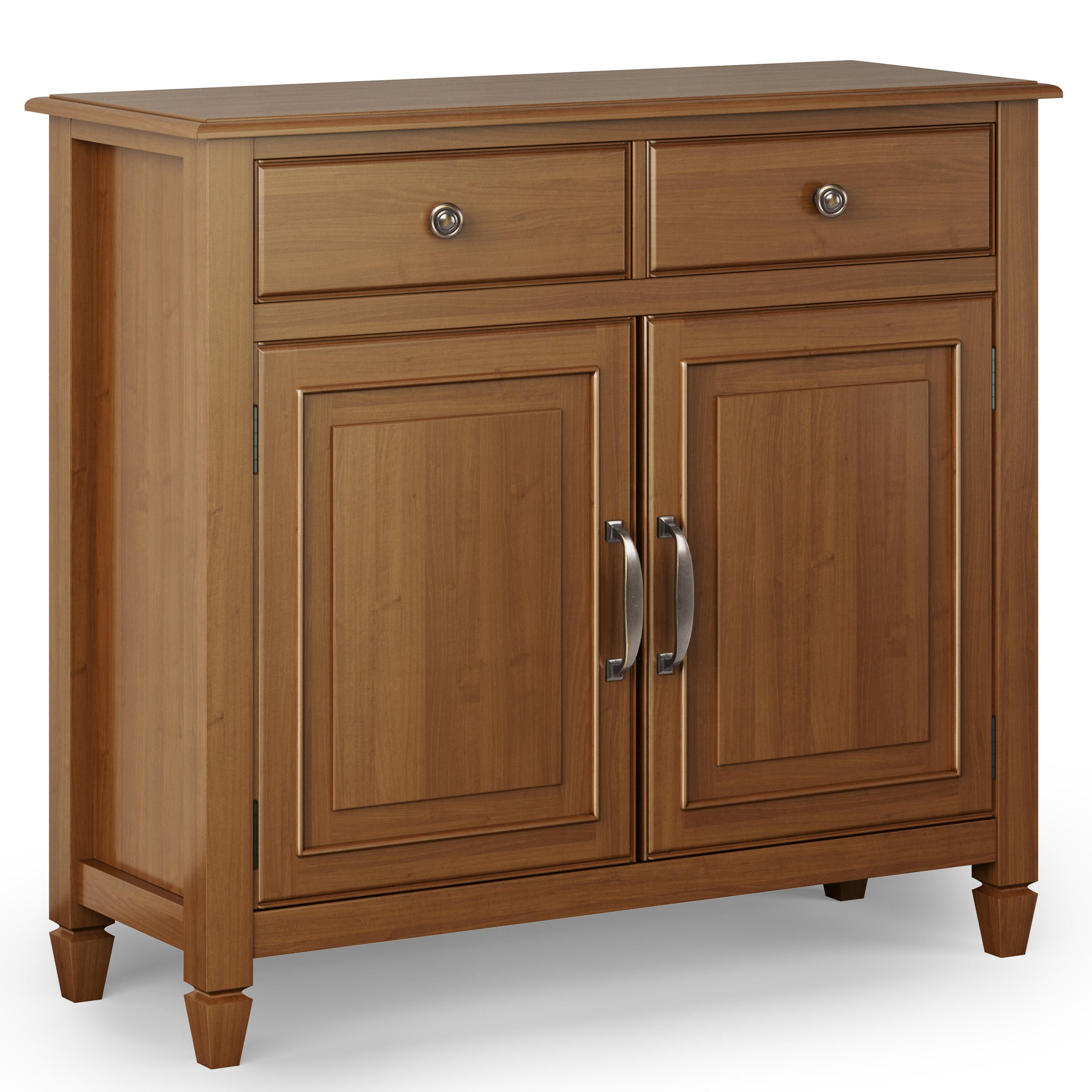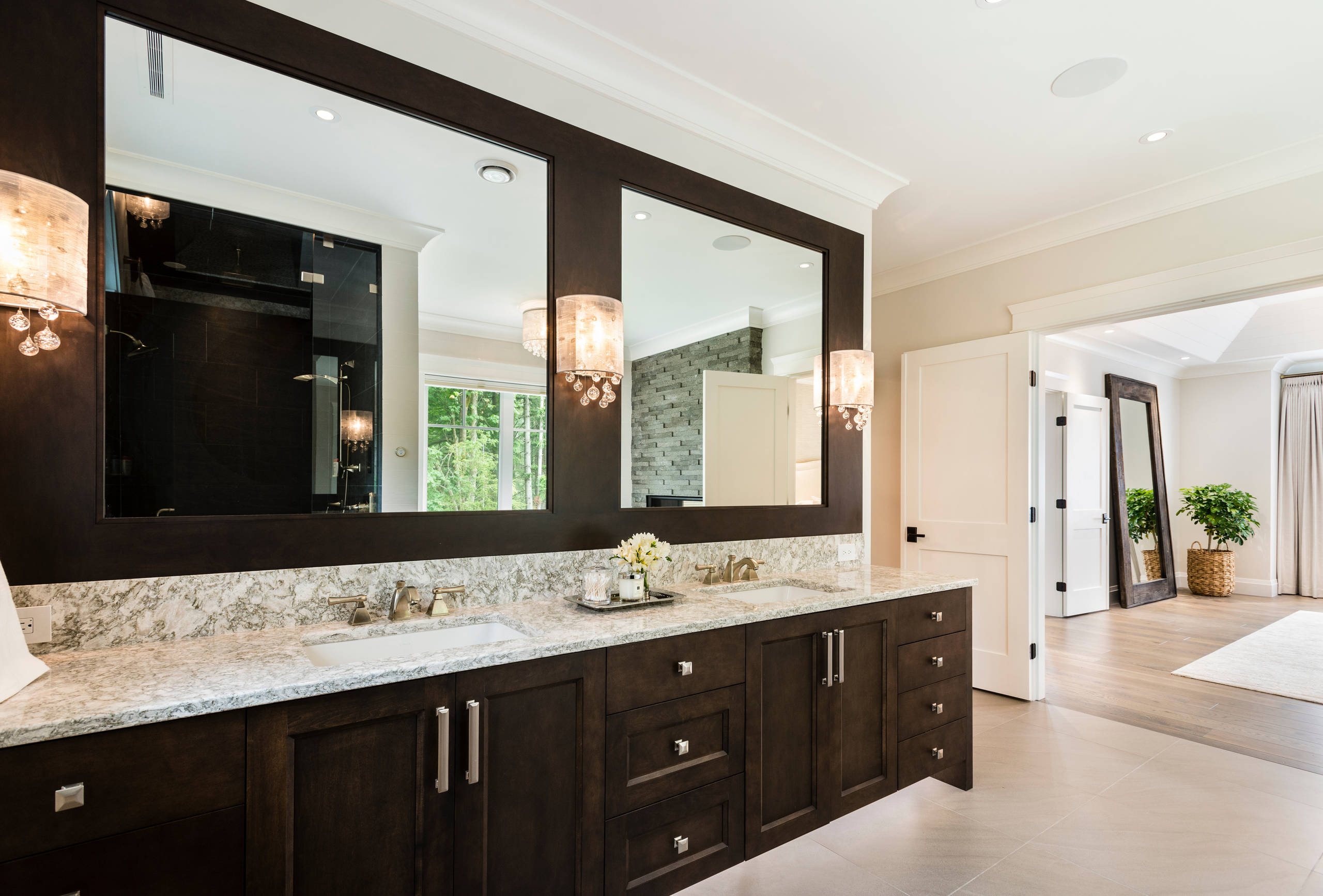Design and Aesthetics

Brown wood bathroom cabinets offer a warm and inviting aesthetic that can be seamlessly integrated into various design styles. The versatility of brown wood allows for a range of possibilities, from rustic farmhouse to sleek modern, and everything in between.
Integrating Brown Wood Cabinets into Different Bathroom Styles
Brown wood cabinets can be incorporated into a variety of bathroom styles, depending on the desired aesthetic and the specific shade of brown. Here are some examples:
- Farmhouse: A light brown wood cabinet with distressed finishes and simple hardware complements a farmhouse bathroom. This style often features white subway tile, vintage fixtures, and natural elements like woven baskets and plants.
- Rustic: Darker brown wood cabinets with a rough-hewn texture and iron hardware create a rustic feel. This style typically incorporates stone or brick accents, reclaimed wood elements, and natural materials like leather and wool.
- Modern: A sleek, minimalist bathroom can be achieved with brown wood cabinets in a contemporary finish. Choose cabinets with clean lines and minimal hardware. Pair them with white or gray tiles, chrome fixtures, and modern lighting.
- Traditional: Brown wood cabinets with ornate details and brass hardware are perfect for a traditional bathroom. This style often features classic white or cream tiles, marble countertops, and traditional lighting fixtures.
Choosing the Right Hardware and Fixtures
The hardware and fixtures you choose can significantly impact the overall aesthetic of your bathroom. Here are some tips for selecting the right elements to complement brown wood cabinets:
- Consider the style: Choose hardware and fixtures that match the overall design style of your bathroom. For example, rustic hardware like oil-rubbed bronze or black iron complements a farmhouse or rustic style, while polished chrome or nickel fixtures work well in a modern or traditional bathroom.
- Think about the finish: The finish of the hardware and fixtures should complement the finish of the cabinets. For example, brushed nickel hardware looks great with a natural wood finish, while polished brass hardware complements a stained or lacquered wood finish.
- Pay attention to scale: Choose hardware and fixtures that are proportional to the size of the cabinets and the overall space. Large, ornate hardware can overwhelm a small bathroom, while small, simple hardware can get lost in a large space.
Functionality and Storage: Brown Wood Bathroom Cabinet

Brown wood bathroom cabinets offer a blend of timeless elegance and practicality, making them a popular choice for enhancing both the aesthetics and functionality of any bathroom. Their natural warmth and durability contribute to a welcoming ambiance while providing ample storage solutions for keeping your bathroom organized and clutter-free.
Types of Brown Wood Bathroom Cabinets
Brown wood bathroom cabinets come in various styles and sizes to suit diverse bathroom layouts and storage needs. Understanding the different types available can help you select the perfect fit for your bathroom.
- Vanities: These are the cornerstone of most bathrooms, offering a combination of storage space and a countertop for sinks. Vanities come in various configurations, including single-sink, double-sink, and corner vanities, with drawers and cabinets for storing toiletries, towels, and other bathroom essentials.
- Medicine Cabinets: These are wall-mounted cabinets designed specifically for storing medications, toiletries, and other personal care items. Medicine cabinets are typically small but offer valuable storage space, especially in smaller bathrooms.
- Linen Cabinets: These larger cabinets are perfect for storing towels, linens, and other bulky items. They are often freestanding or built-in and provide ample storage space, keeping your bathroom organized and clutter-free.
- Wall Cabinets: These versatile cabinets can be mounted on any wall, providing additional storage space for various items. Wall cabinets come in various sizes and configurations, offering flexibility in maximizing storage space within your bathroom.
Maximizing Storage Space
Brown wood bathroom cabinets can be optimized for maximum storage efficiency by implementing smart organization strategies. These tips can help you make the most of your cabinet space:
- Utilize organizers: Drawer organizers, shelf dividers, and tiered trays can create designated compartments within your cabinets, allowing you to separate and store items efficiently.
- Maximize vertical space: Utilize stacking shelves, vertical organizers, and tiered storage solutions to make the most of vertical space within your cabinets.
- Utilize doors: Install over-the-door organizers or hooks on the back of cabinet doors to store small items like brushes, combs, or hair accessories.
- Embrace clear containers: Store items in clear containers, allowing you to easily see what’s inside and find what you need quickly. This can also help you avoid overstocking and keep your bathroom clutter-free.
Materials and Maintenance

The choice of wood for your bathroom cabinet is crucial, as it will impact its durability, moisture resistance, and overall longevity. Several wood types are commonly used for bathroom cabinets, each with its own set of advantages and disadvantages. Understanding these characteristics will help you select the best wood for your needs and ensure your cabinet stands the test of time.
Wood Types for Bathroom Cabinets
The type of wood you choose for your bathroom cabinet will significantly influence its durability, moisture resistance, and overall longevity. Here’s a breakdown of some popular wood choices:
- Oak: Known for its strength, durability, and beautiful grain patterns, oak is a popular choice for bathroom cabinets. It’s naturally resistant to moisture and can withstand high humidity levels. However, oak can be expensive and requires proper sealing to protect it from water damage.
- Maple: Maple is another durable hardwood with a tight grain, making it resistant to moisture and scratches. It’s also known for its beautiful light color and subtle grain patterns. Maple is a good choice for modern bathrooms but can be more susceptible to staining than oak.
- Cherry: Cherry wood is prized for its rich reddish-brown color and distinctive grain. It’s relatively hard and durable, making it suitable for bathroom cabinets. However, cherry is more susceptible to moisture damage than oak or maple and requires proper sealing to protect it.
- Walnut: Walnut is a luxurious hardwood known for its dark brown color and striking grain patterns. It’s durable and moisture-resistant, making it a good choice for bathroom cabinets. However, walnut can be expensive and requires careful maintenance to preserve its beauty.
- Mahogany: Mahogany is a reddish-brown hardwood known for its durability, moisture resistance, and beautiful grain patterns. It’s a good choice for bathroom cabinets, but it can be expensive and requires proper sealing to protect it from water damage.
Sealing and Finishing
Proper sealing and finishing are essential for protecting your brown wood bathroom cabinet from moisture damage. A high-quality sealant creates a barrier that prevents water from penetrating the wood and causing warping, swelling, or rot. Here’s why sealing is crucial:
“Sealing and finishing create a protective layer that safeguards the wood from water damage, preventing warping, swelling, and rot.”
- Moisture Resistance: Sealants create a waterproof barrier that prevents moisture from penetrating the wood, protecting it from damage caused by humidity and splashes.
- Durability: A sealant adds a protective layer that makes the wood more resistant to scratches, dents, and abrasions, extending its lifespan.
- Aesthetic Enhancement: Sealants can enhance the wood’s natural beauty by highlighting its grain patterns and providing a smooth, even finish.
Cleaning and Maintenance
Regular cleaning and maintenance are crucial for preserving the appearance and longevity of your brown wood bathroom cabinet. Here are some tips:
- Dust Regularly: Use a soft cloth or a feather duster to remove dust and debris from the cabinet’s surface. Avoid abrasive cleaners or materials that can scratch the wood.
- Clean Spills Promptly: Wipe up spills immediately with a damp cloth to prevent stains or water damage. Avoid using harsh chemicals or abrasive cleaners.
- Apply a Wood Polish: Apply a wood polish or conditioner periodically to help maintain the cabinet’s shine and protect it from dryness. Choose a polish specifically designed for wood and follow the manufacturer’s instructions.
- Avoid Excessive Moisture: Keep the cabinet away from direct water sources, such as showers or sinks, to prevent water damage. Ensure adequate ventilation in the bathroom to reduce humidity levels.
- Protect from Heat: Avoid placing hot items directly on the cabinet’s surface, as heat can cause warping or discoloration. Use trivets or heat-resistant pads to protect the wood.
